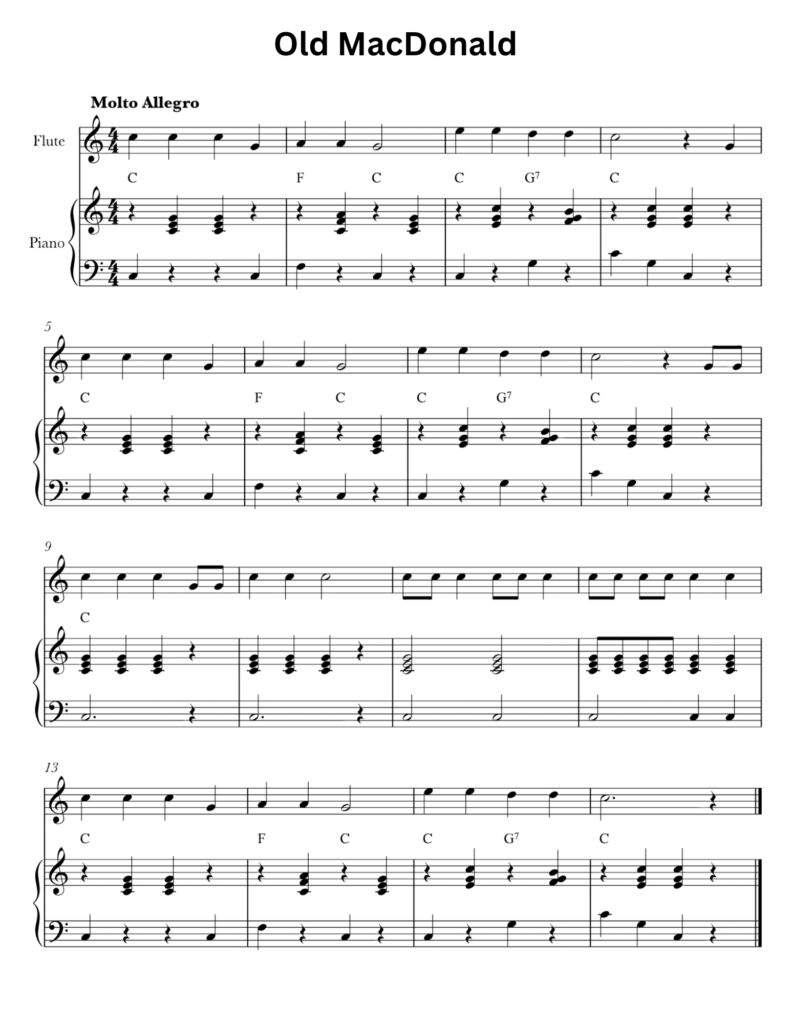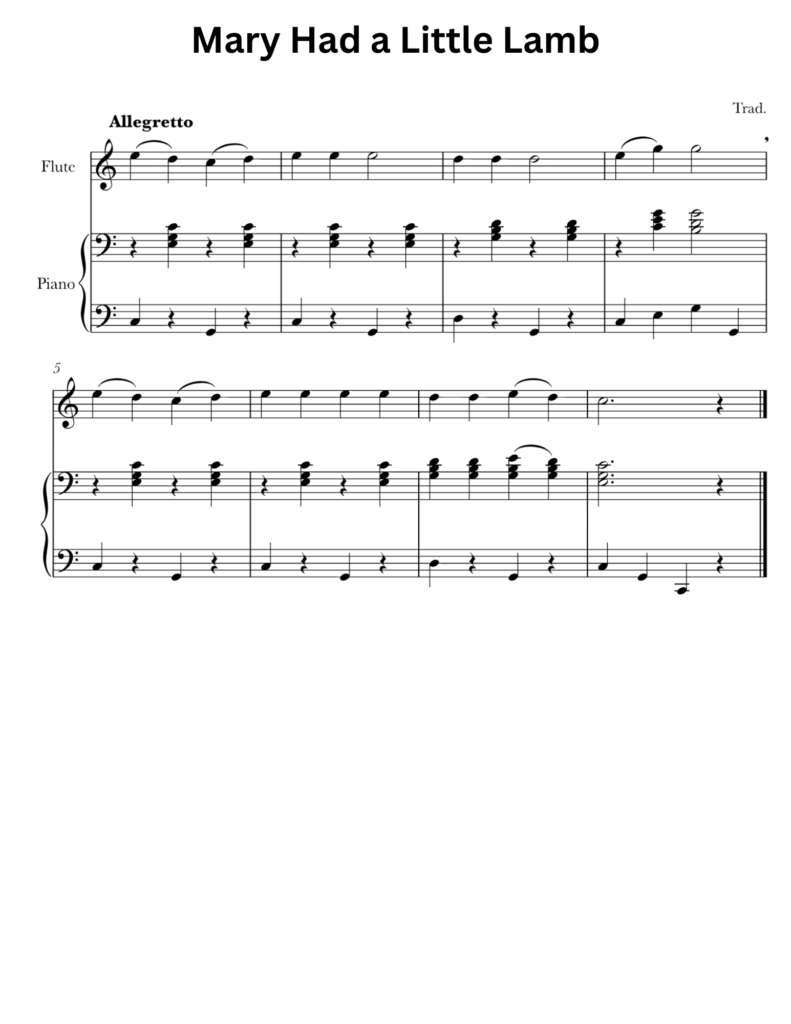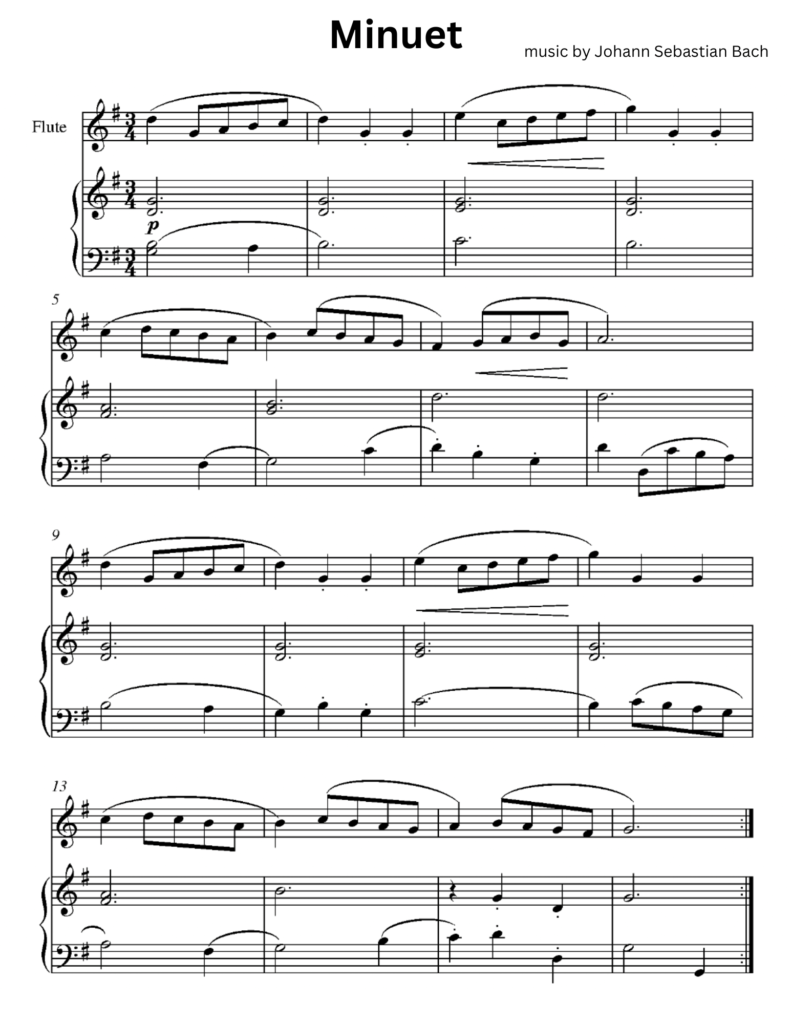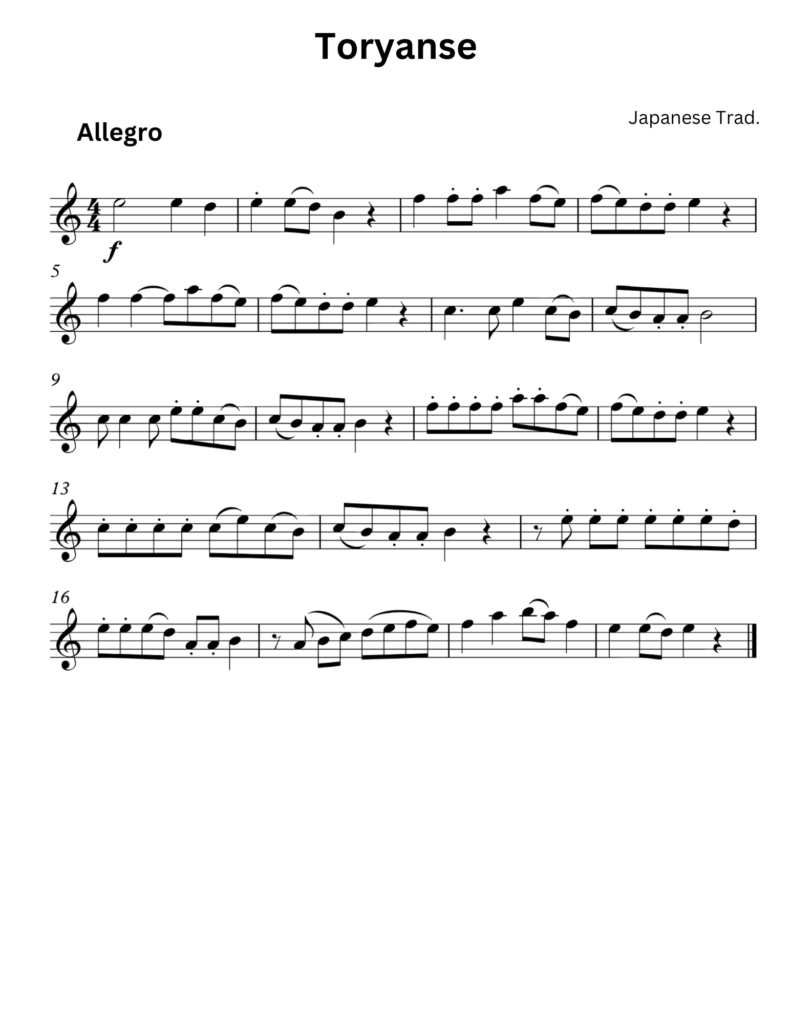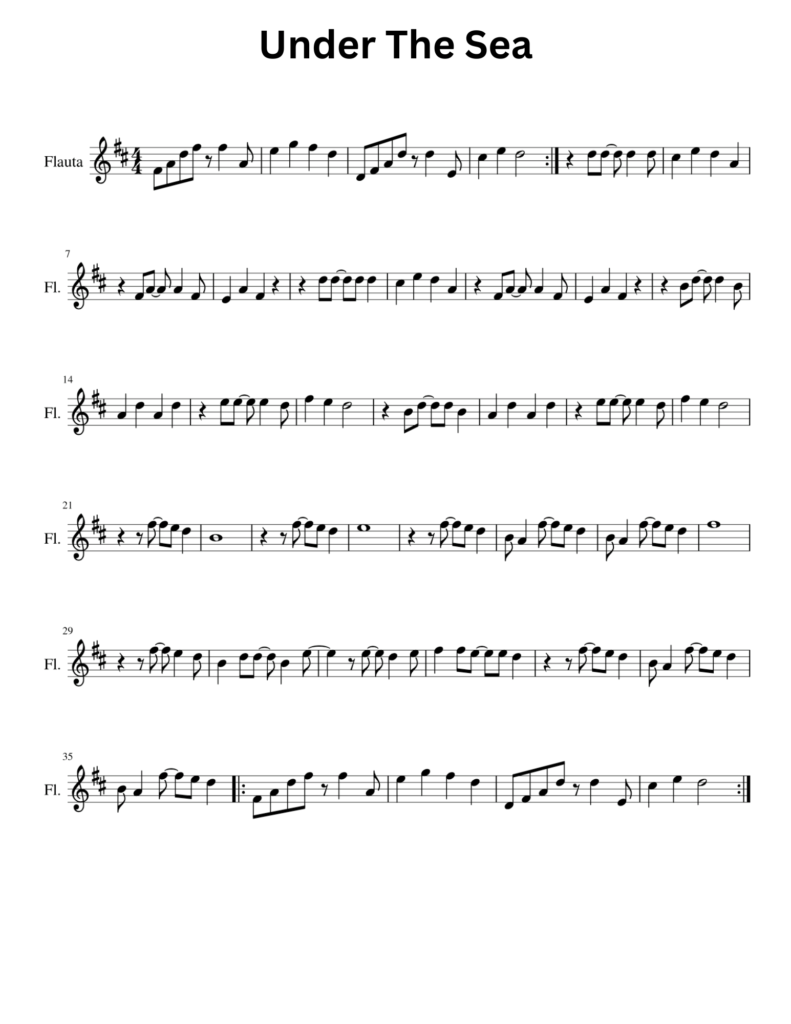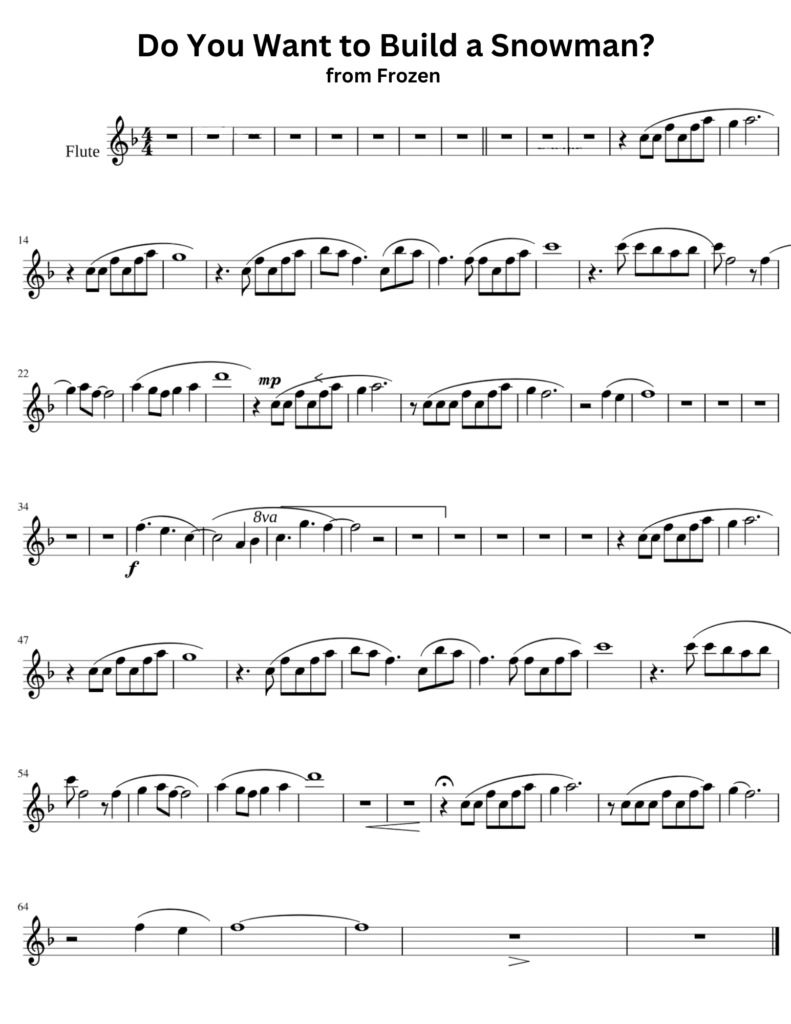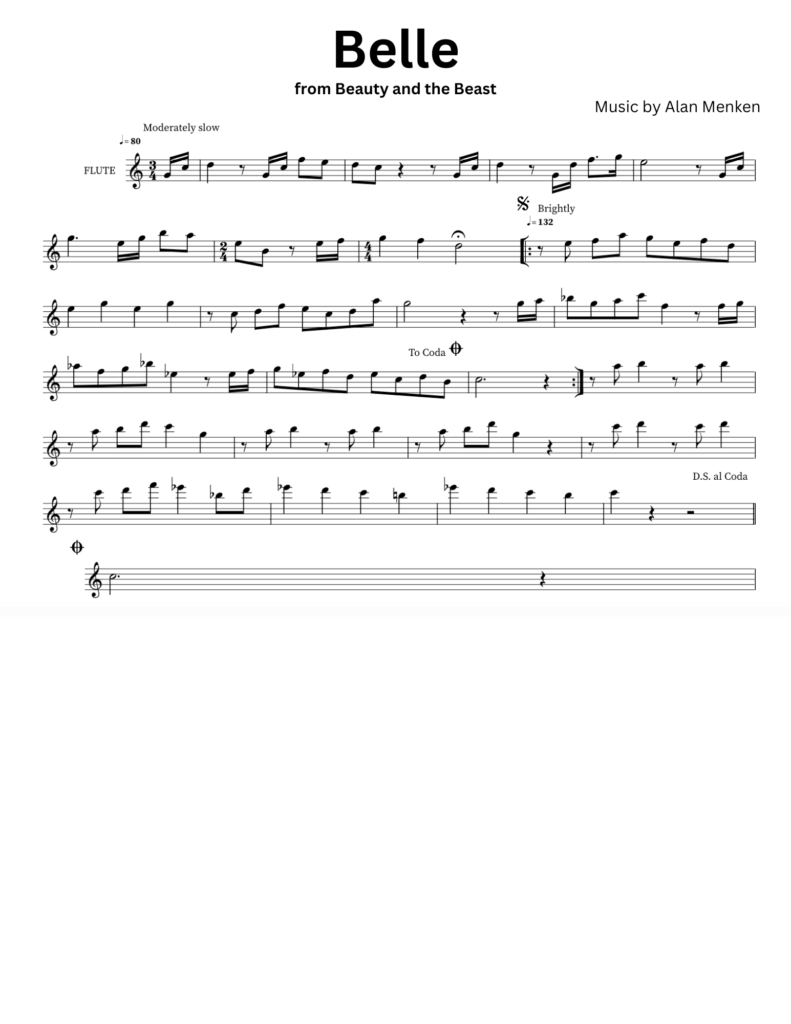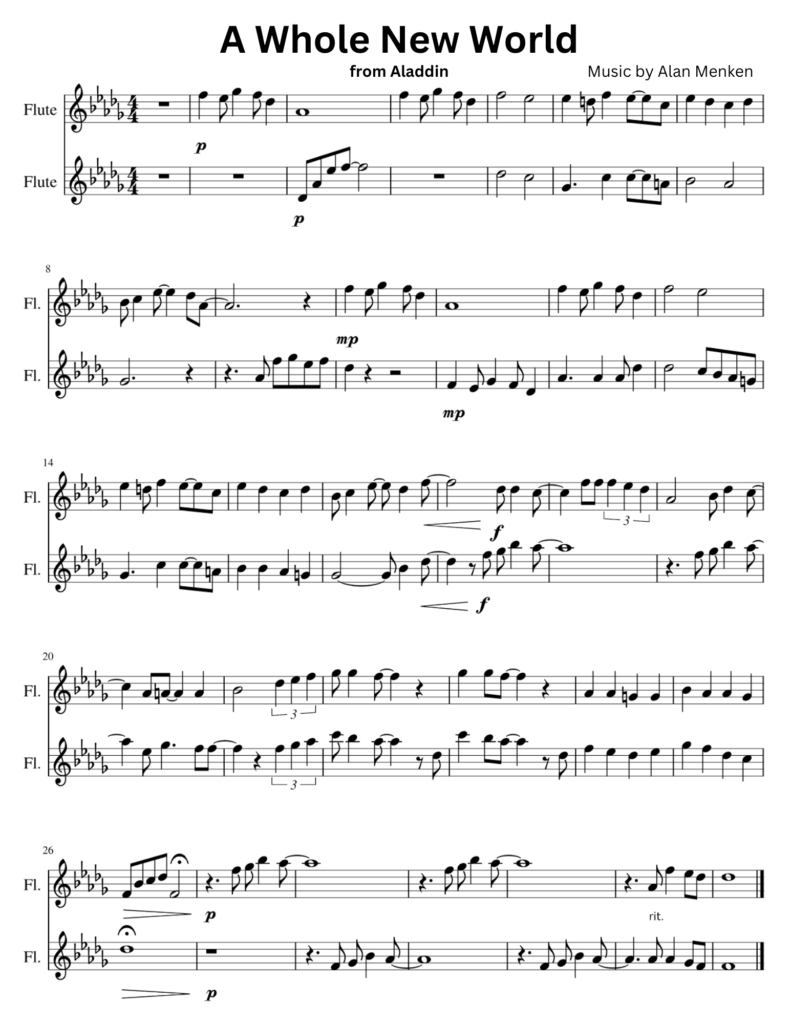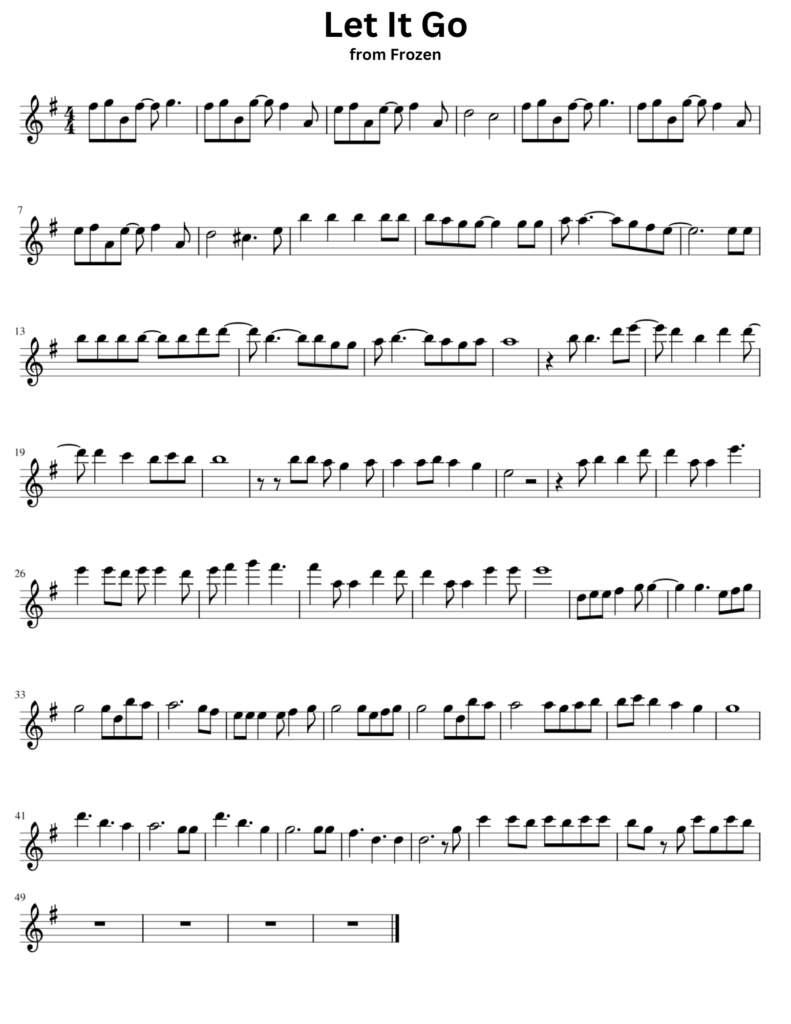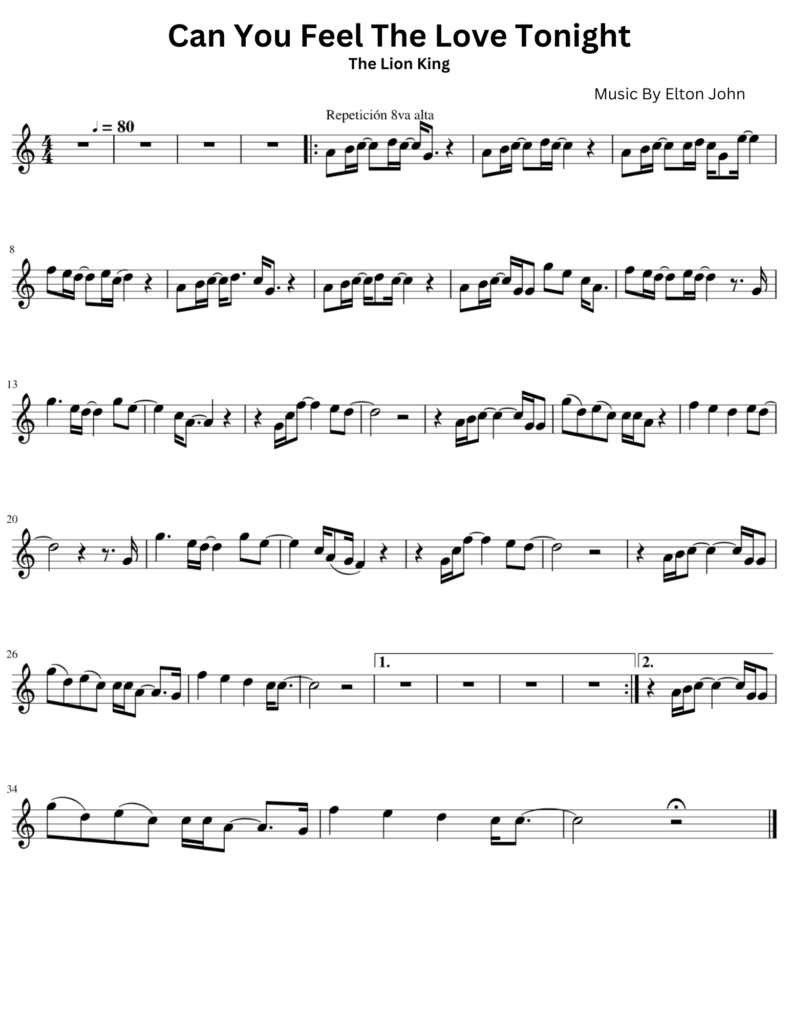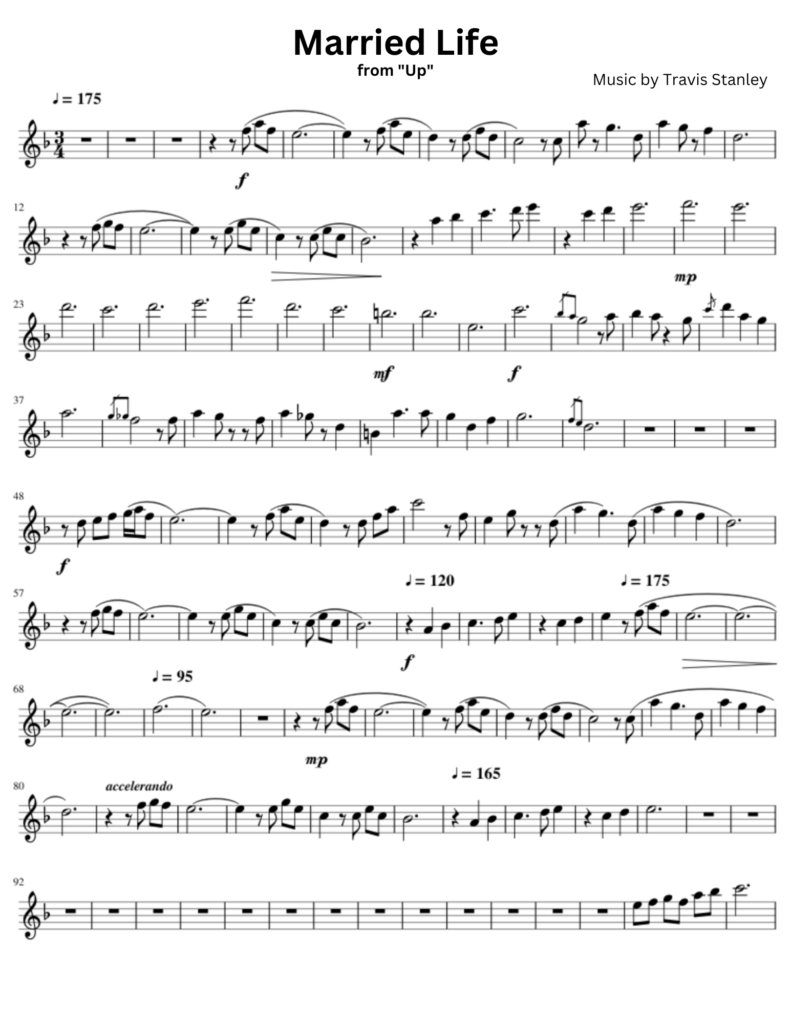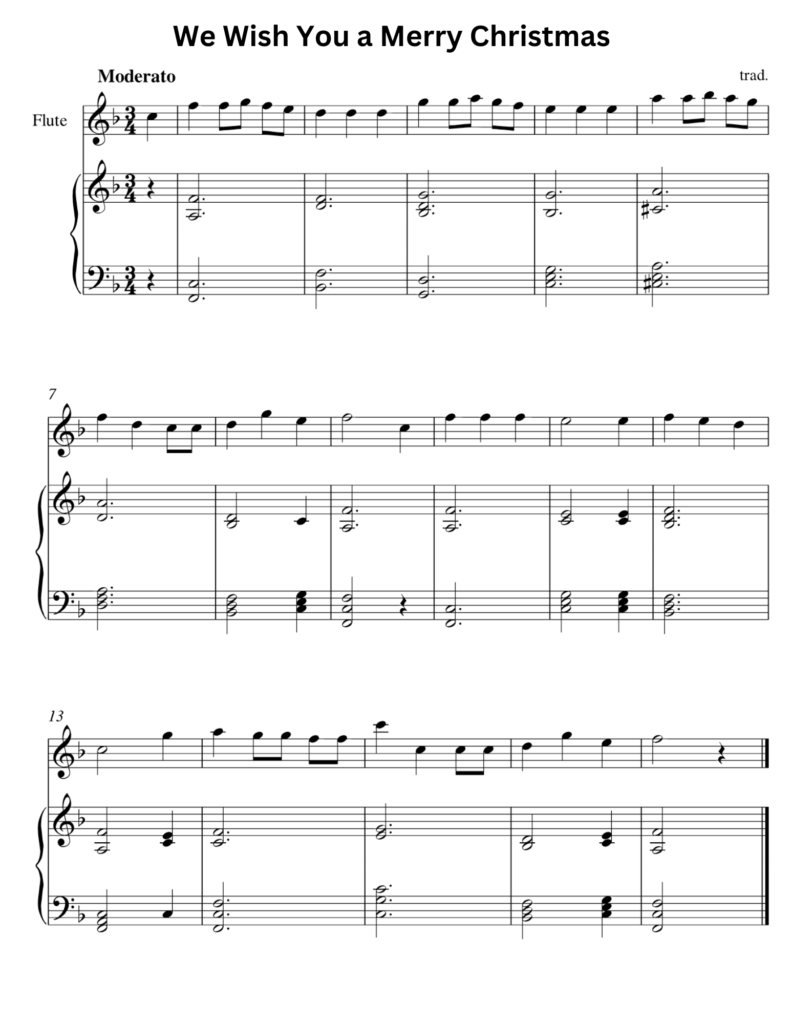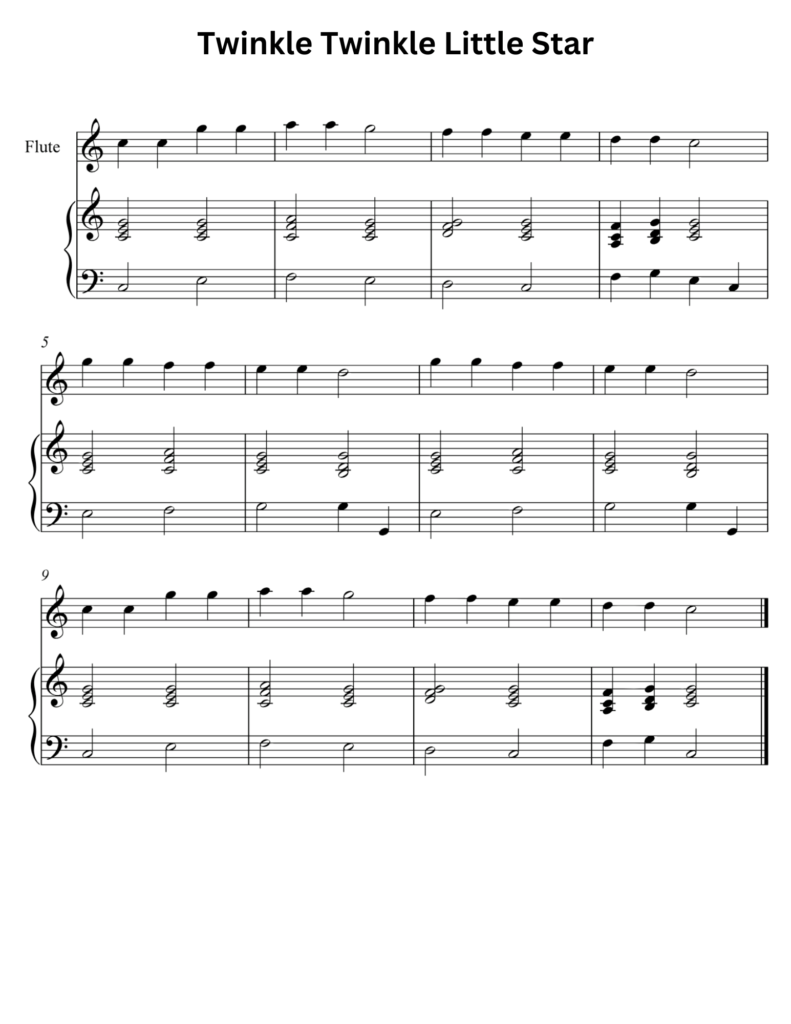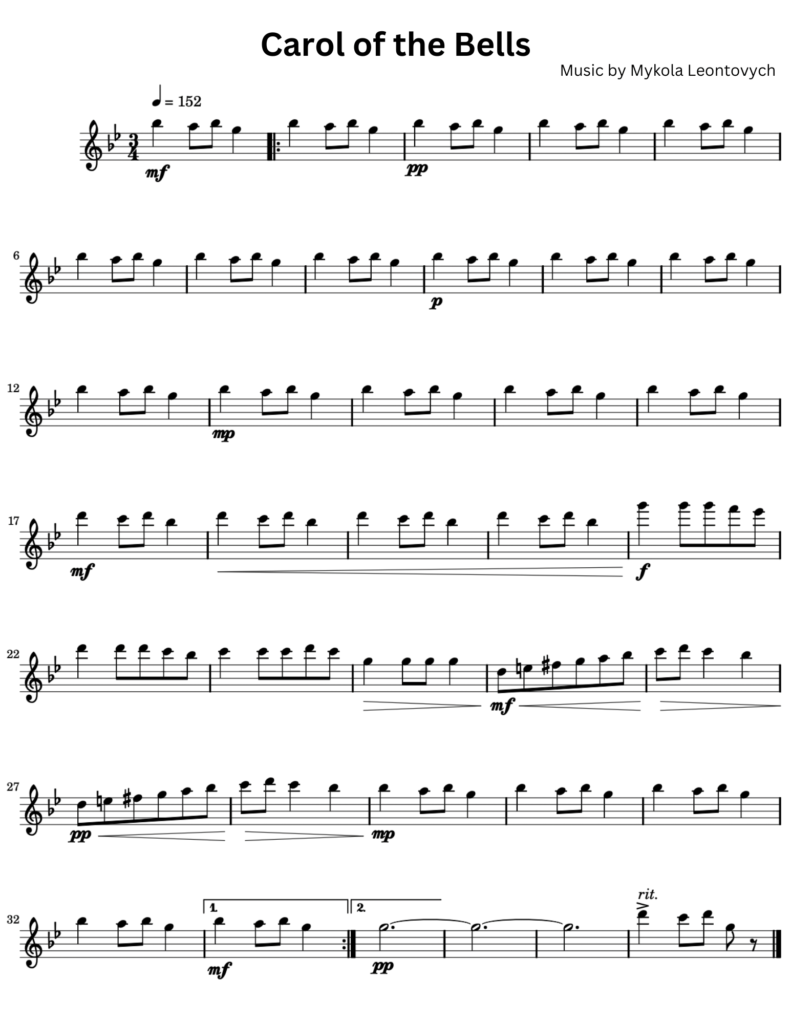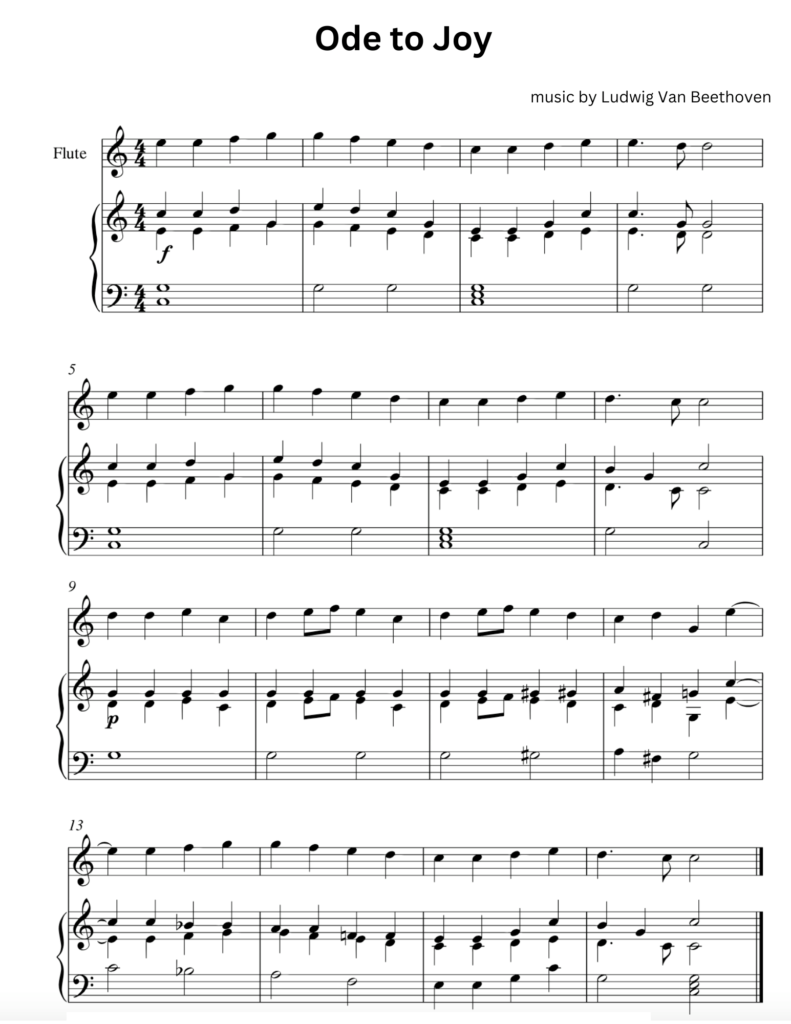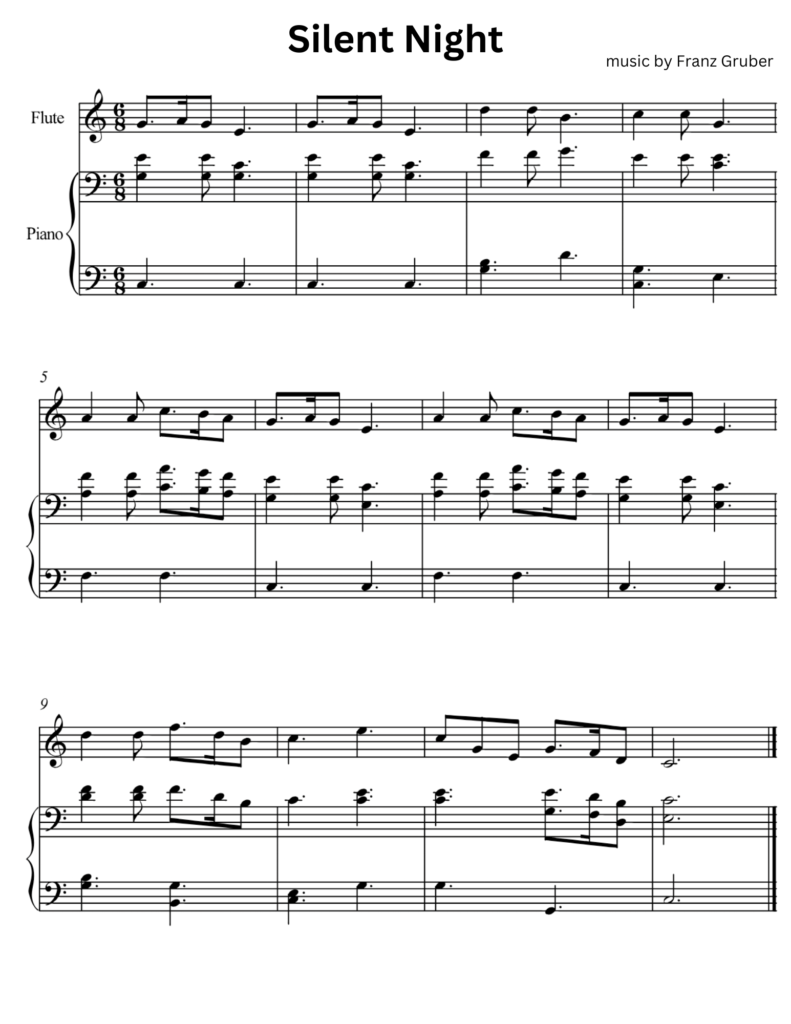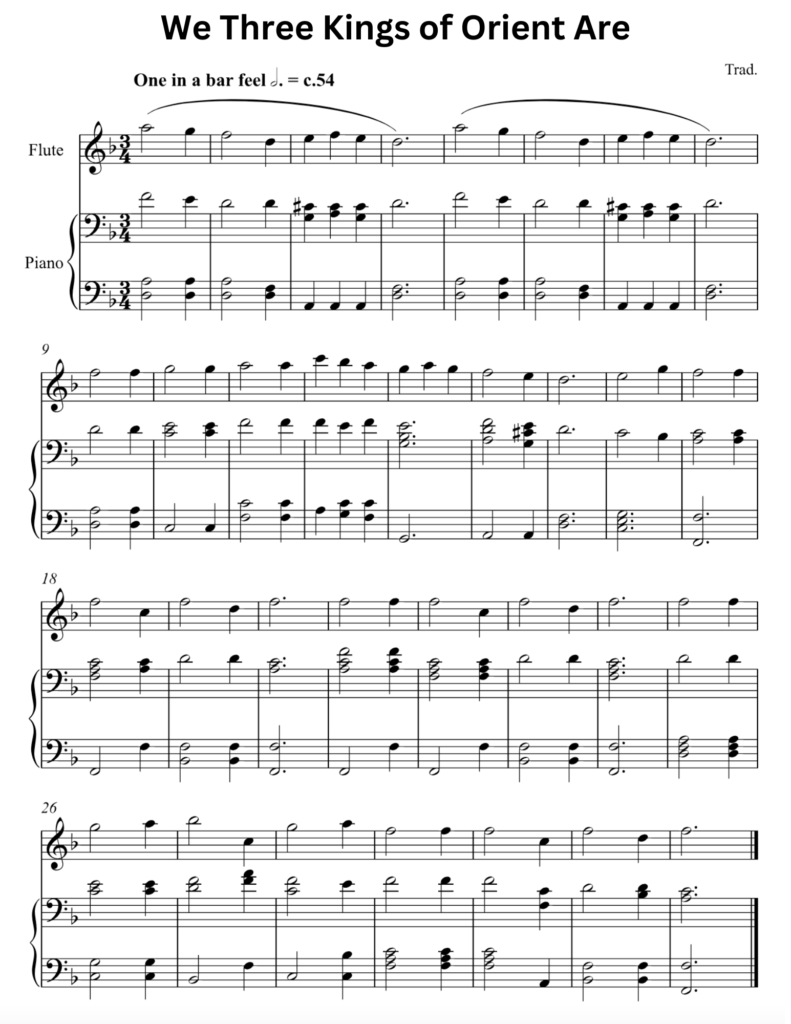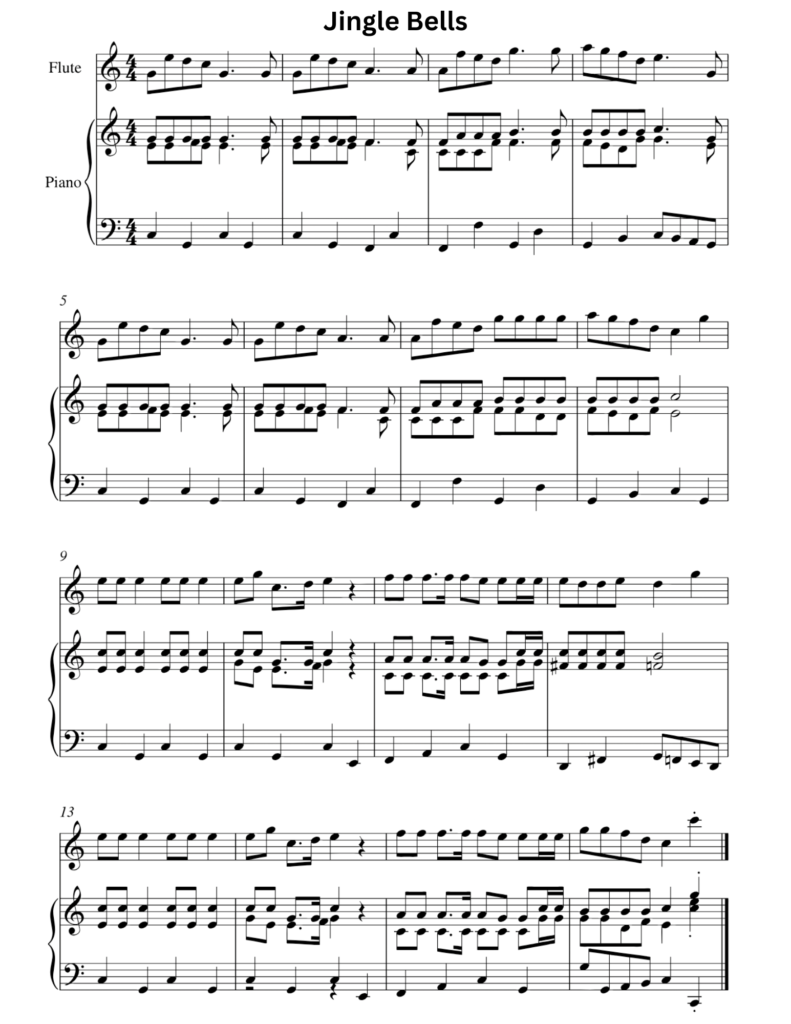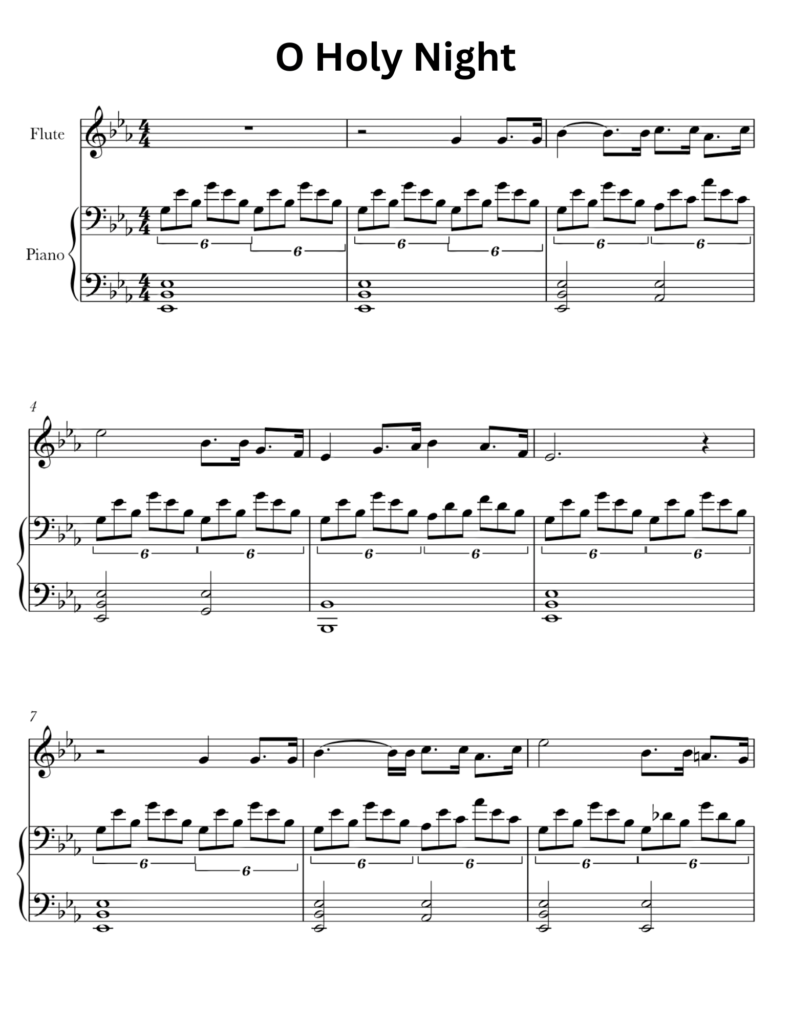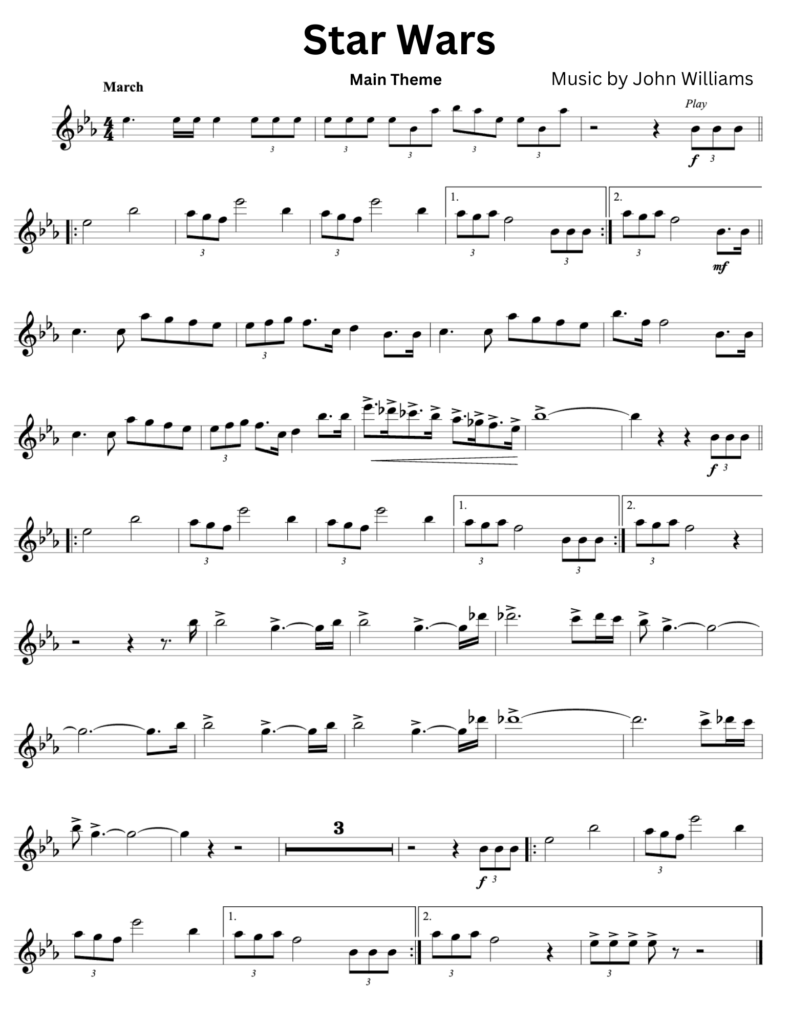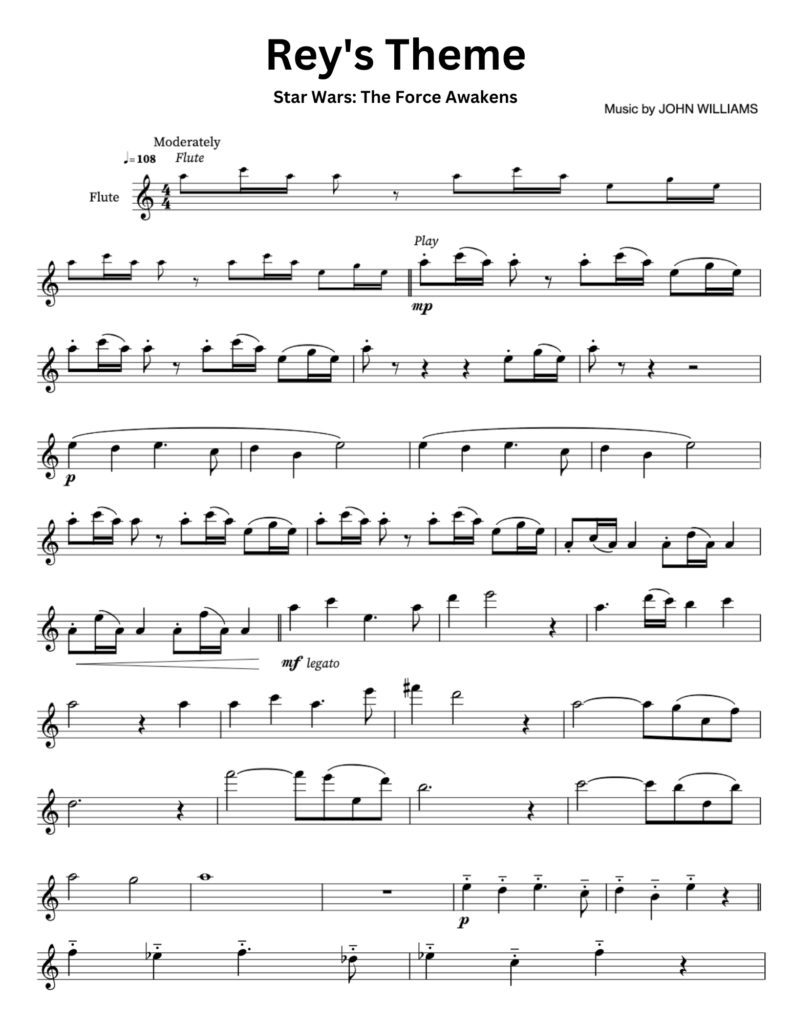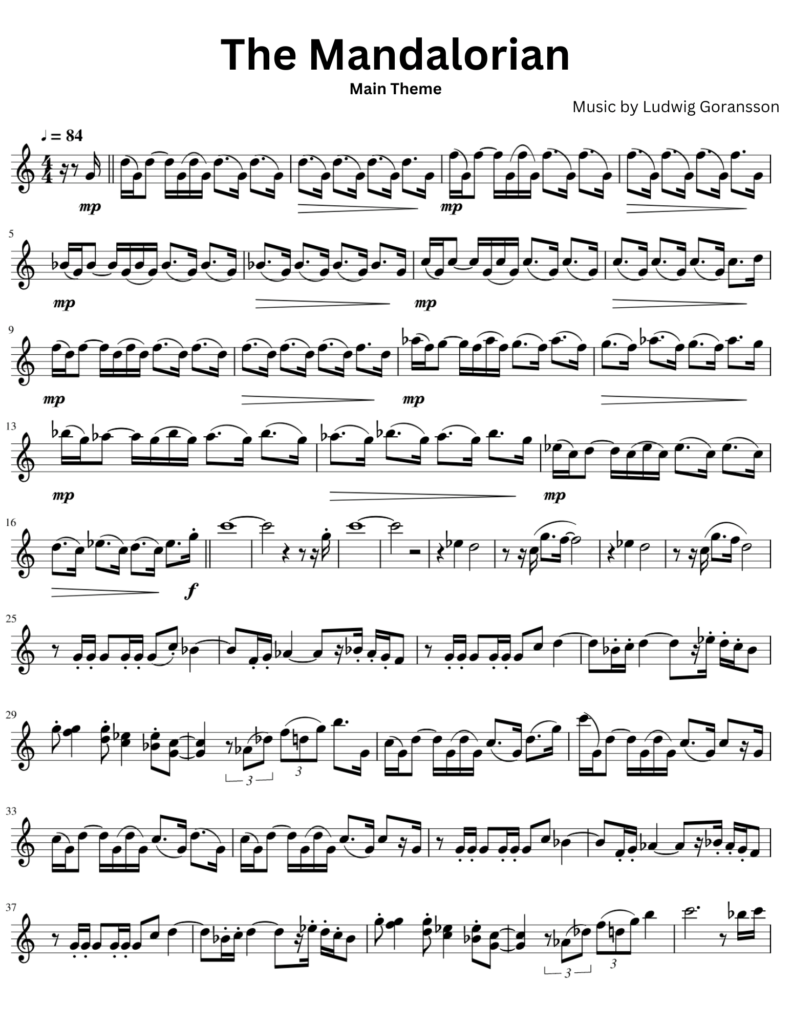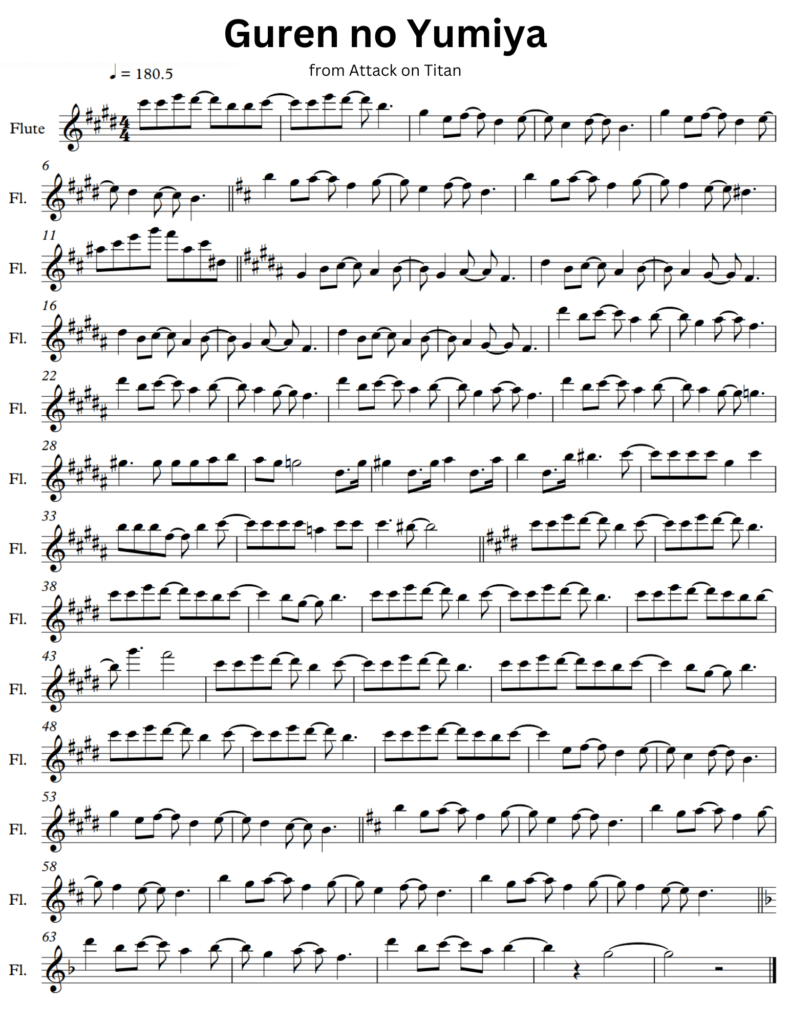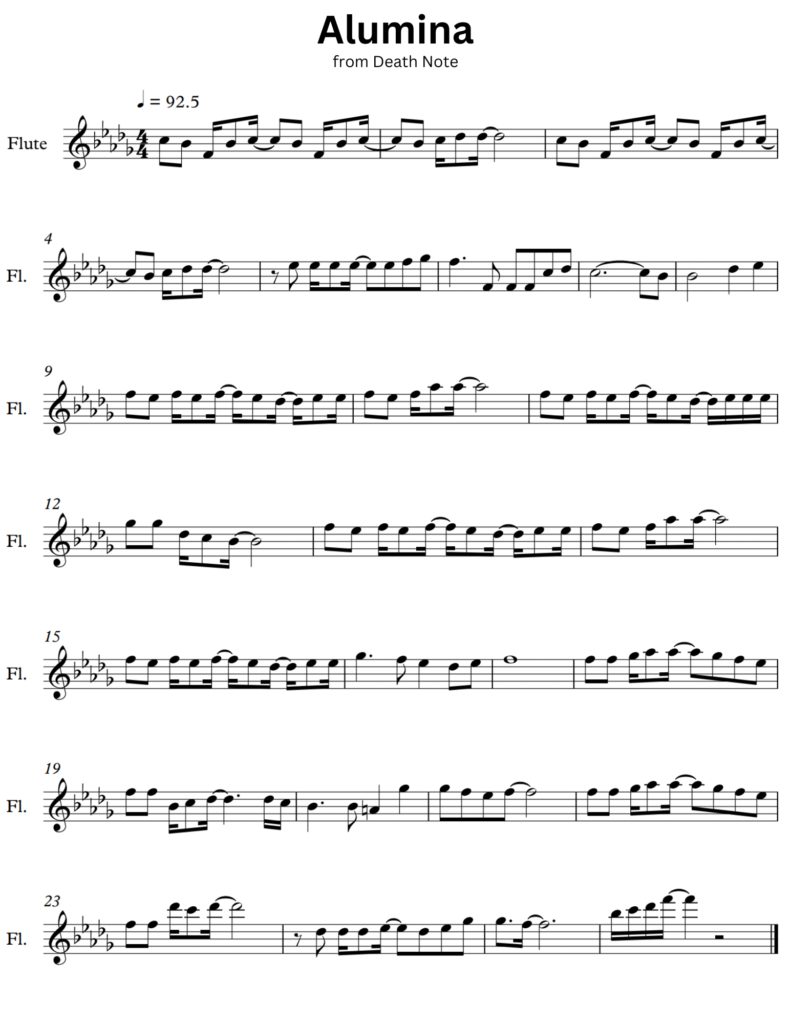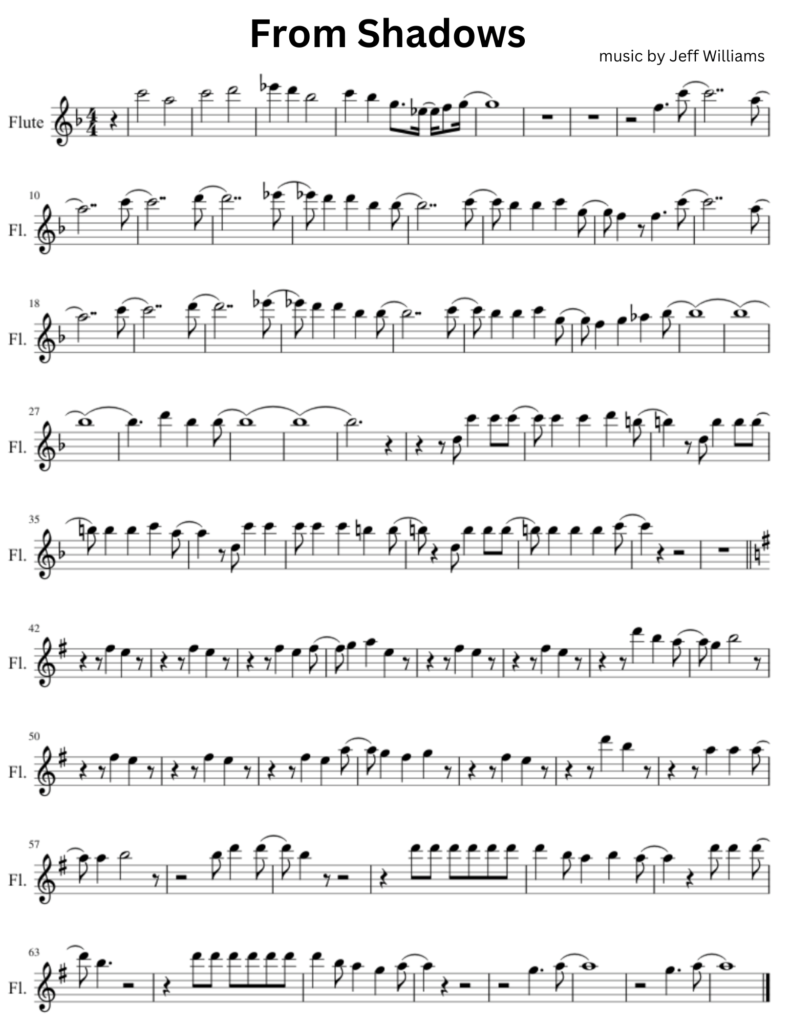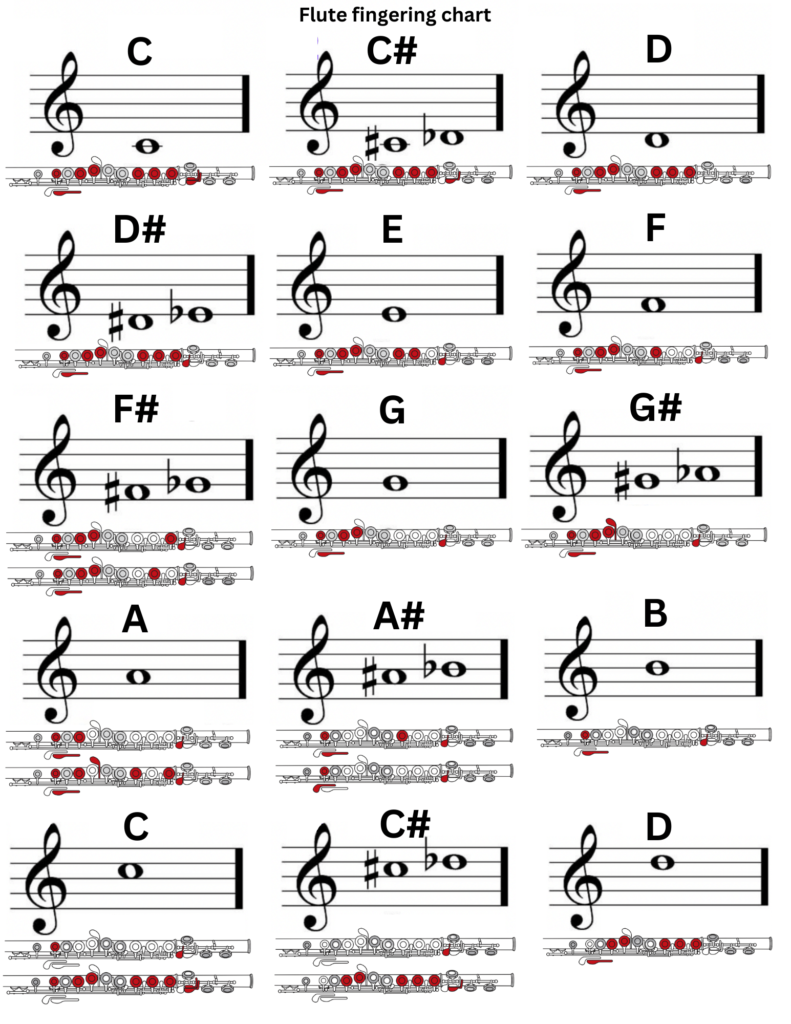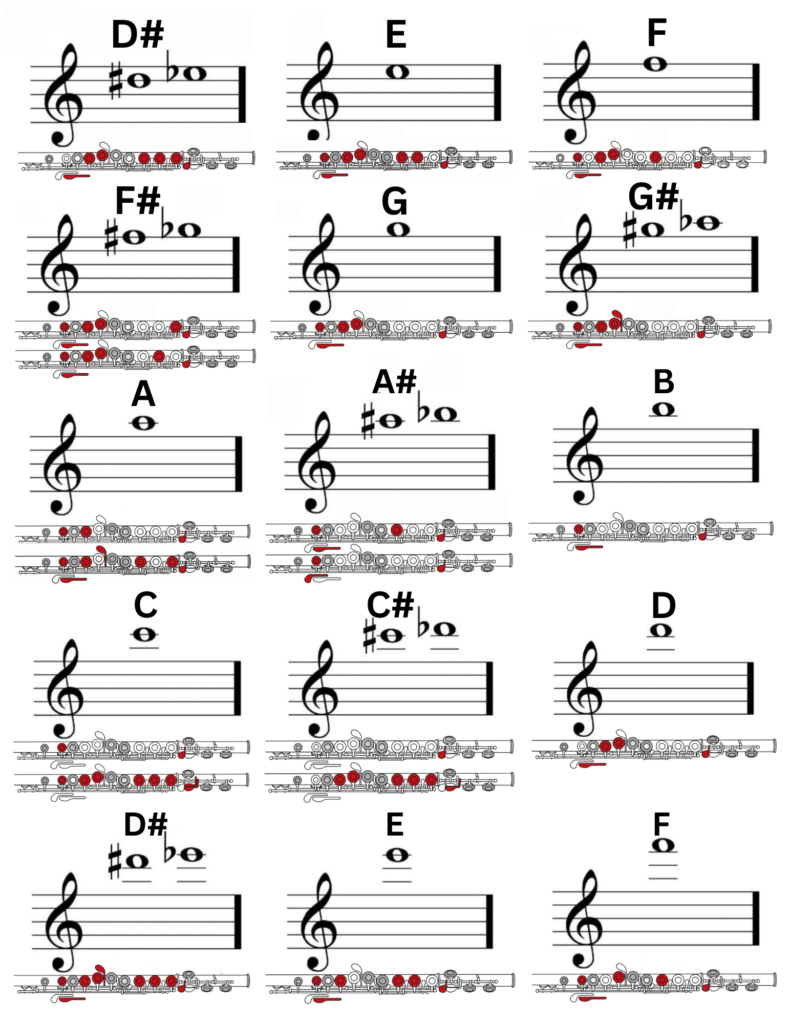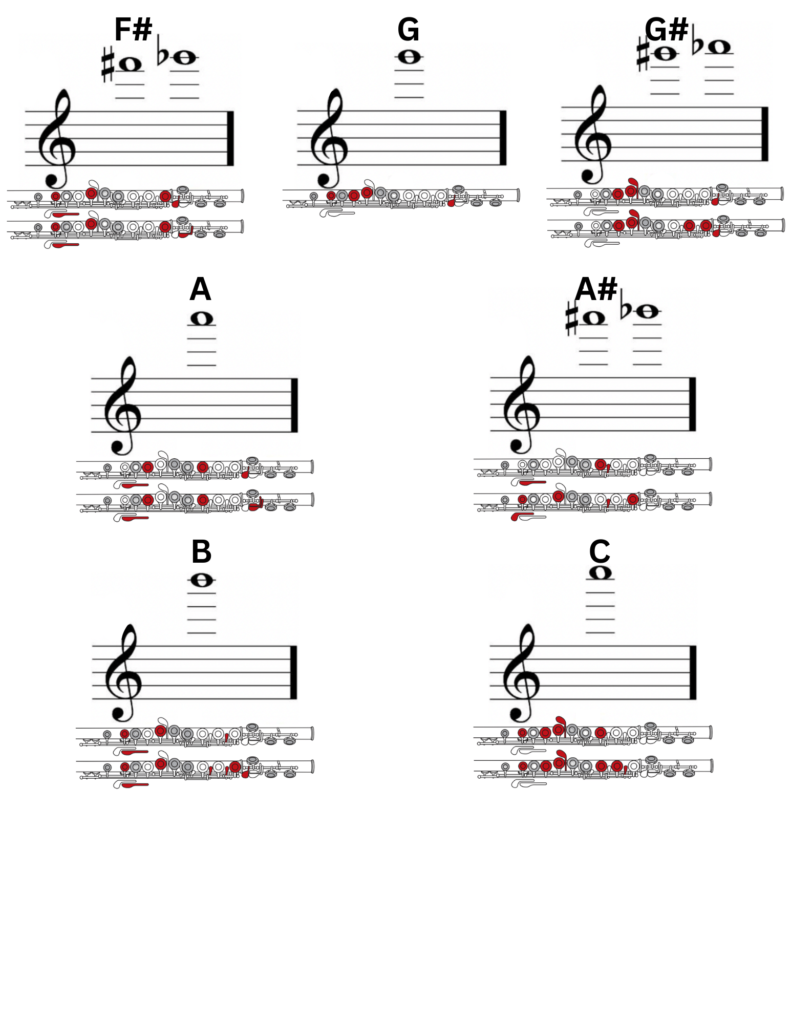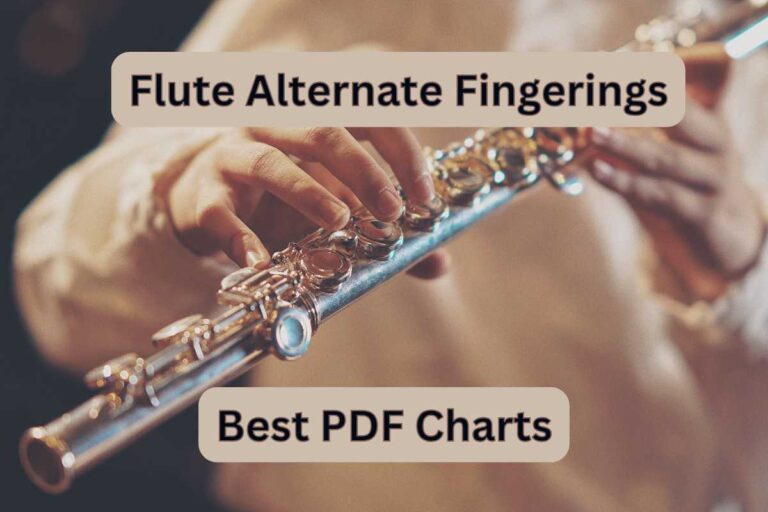Free Easy Flute Sheet Music: Disney, Christmas, Beginner Solo

Are you an aspiring flutist needing easy flute sheet music that’s easy to play? Look no further! We offer a diverse selection of Disney, Christmas & other songs to help develop your flutist skills fast. Here we provide flute parts & fingering charts as well as basic theory to develop your flute playing further and make learning faster & fun. So let’s get learning now!
Classic Free Flute Sheet Music
Disney Free Flute Sheet Music
Christmas Free Flute Sheet Music
Popular Free Flute Sheet Music For Beginners
Anime Free Flute Sheet Music For Beginners
Where to Find More Flute Sheet Music
Musicnotes.com is one of several reliable online resources offering flute players access to sheet music they need for practice and performance, from classical to jazz and everything in between. Offering digital sheet music PDF downloads by leading arrangers and publishers ensures great quality!
Musescore.com boasts an expansive collection of uploaded arrangements. Users can search by song title or browse genre and composer — you’ll discover flute sheet music by Mozart all the way up to Gershwin!
8notes.com offers users free flute sheet music as well as useful fingering and trill diagrams for flute players.
Flute Parts
Reading flute sheet music requires having an in-depth knowledge of its component parts. Doing this allows you to quickly recognize notes, symbols, techniques and phrasing easily while being familiar with all parts of an instrument will allow for a proper execution of what has been written down in front of you.
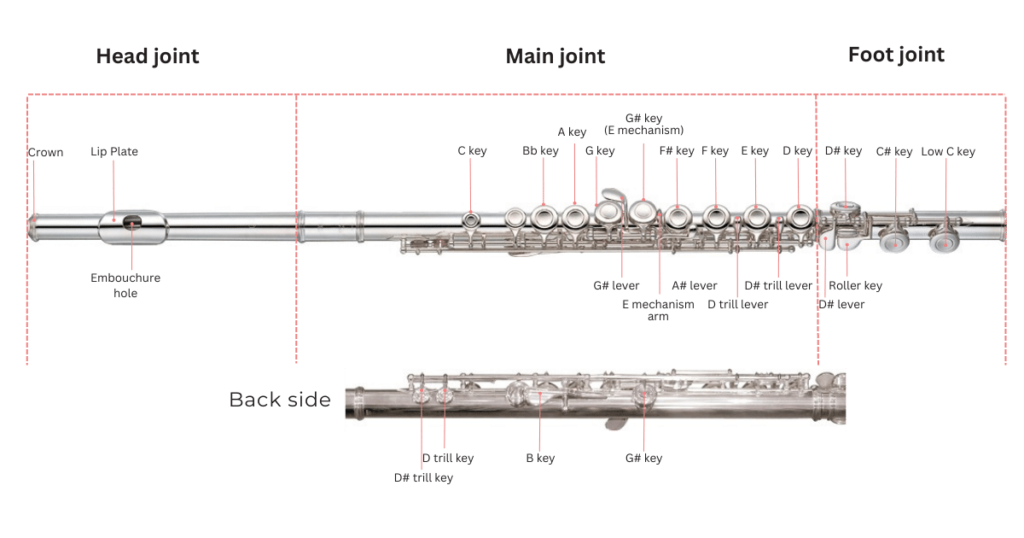
Mastery of flute parts is essential to accurately and beautifully reading and performing flute sheet music. Understanding all facets of this instrument allows your sound to reach its highest possible quality and accuracy – learning Flute Parts will allow your performance to reach its fullest potential!
For additional insight, please review my post regarding Full Anatomy Guide and Different Parts of a Flute.
Flute Fingering Chart
Flute sheet music can be difficult to read, but with a fingering chart’s help — it becomes much simpler. A fingering chart makes identifying which notes need to be played quickly on the flute easier by quickly showing which fingerings must be performed to produce each one.
Flute Fingering Chart – Click to Download PDF
When reading flute sheet music, locate the note you need to play using a fingering chart. Refer back to the fingering chart for guidance on which keys and levers you require for that note. Once you know all the correct fingerings are needed for any given note on its sheet music. Place your fingers onto your flute as per its chart.
Once your fingers are on a flute, use an even stream of air and all fingers are in their proper places before sounding each note. Adjust fingering as necessary until a clear tone emanates from your instrument.
Study your sheet music carefully again, looking out for dynamic markings like accents or crescendos. It will allow you to adjust both breath power and the amount of sound produced by the flute. Also take note of any staccato or legato markings which influence how each note should be played on it.

With consistent practice, you will develop the skill of quickly recognizing flute notes and picking out fingerings effortlessly. Flute fingering charts can provide invaluable assistance as a learning aid and guide in reading flute music; by regularly using them for practice – you’ll quickly and precisely develop your ability to play flute quickly and precisely.
How to Read Flute Sheet Music?
Sheet music uses symbols to depict the pitch, speed and rhythm of songs as well as expression and techniques used for performing them. Viewed like language, sheet music notes can be read like letters; measures as words; phrases as sentences, etc.
Reading flute sheet music may initially seem intimidating, but with practice you will quickly master this art form. Before expanding on more challenging pieces, you must first develop an understanding of its fundamentals.
The Staff
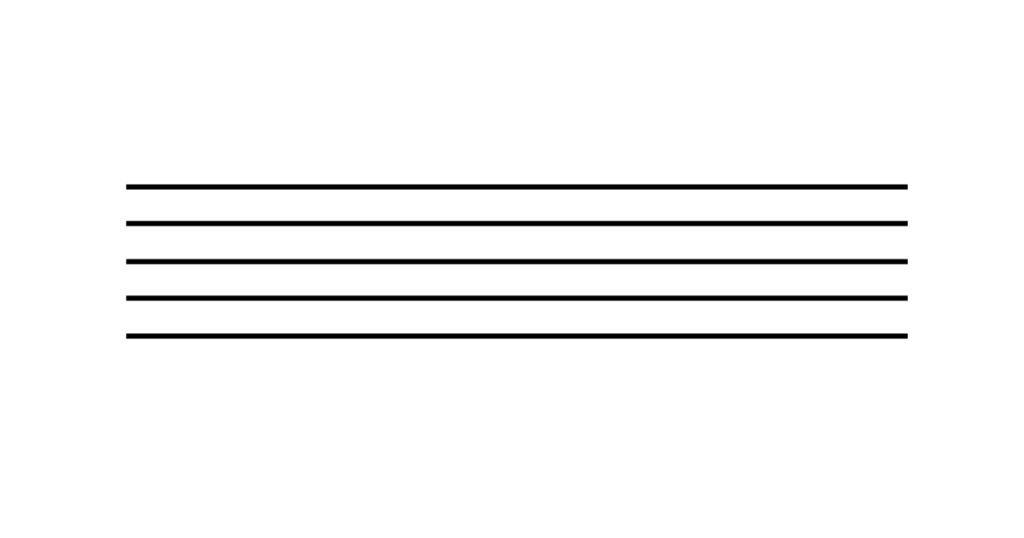
The staff serves as the building block of sheet music. Consisting of five lines that each represent one note from low to high, named for one of seven letters of the alphabet: C D E F G A B
The Clefs
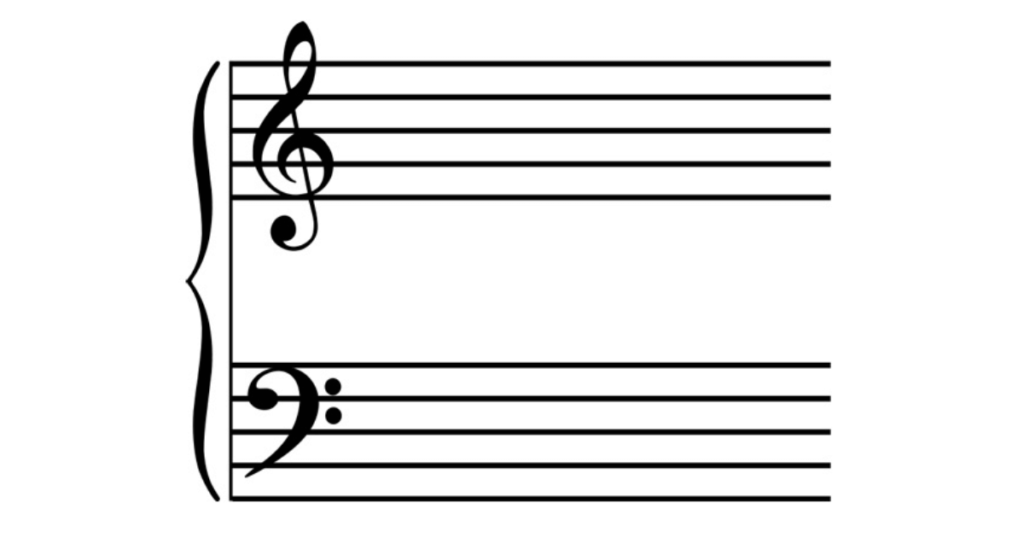
Flutes sheet music features two clefs: treble and bass. The treble clef is for instruments with higher pitches while the bass clef serves for those playing lower pitched instruments.
Treble Clef is the primary musical notation tool used to identify the G note on a staff. Bass Clef is commonly referred to as F-clef wraps around F note on the staff.
The Notes
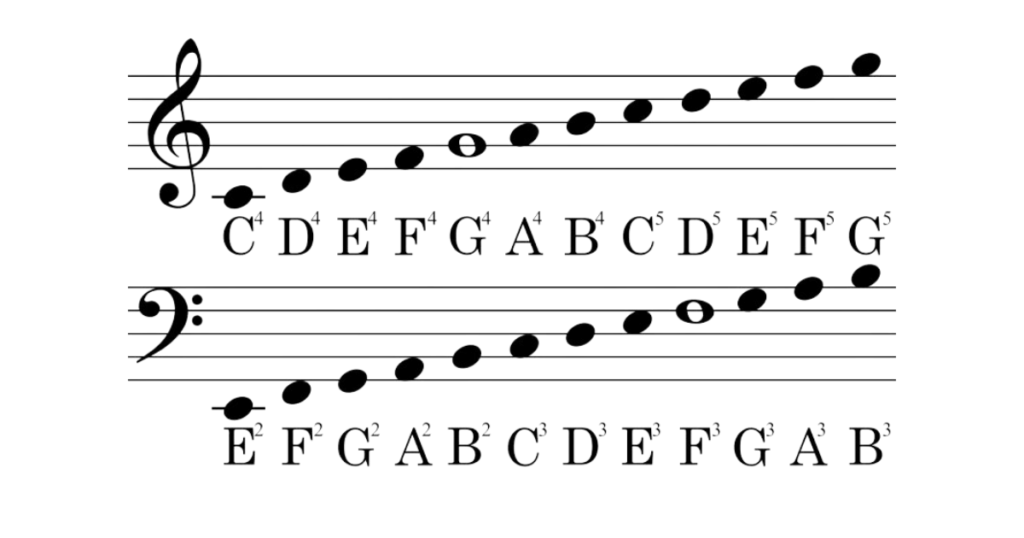
Notes are represented on a staff by tiny black dots placed at specific spots on it and each note corresponds with one letter in the alphabet; their pitches will depend on which line or space it lands upon, making knowing all these notes for every clef essential to reading flute sheet music correctly.
Note Lengths
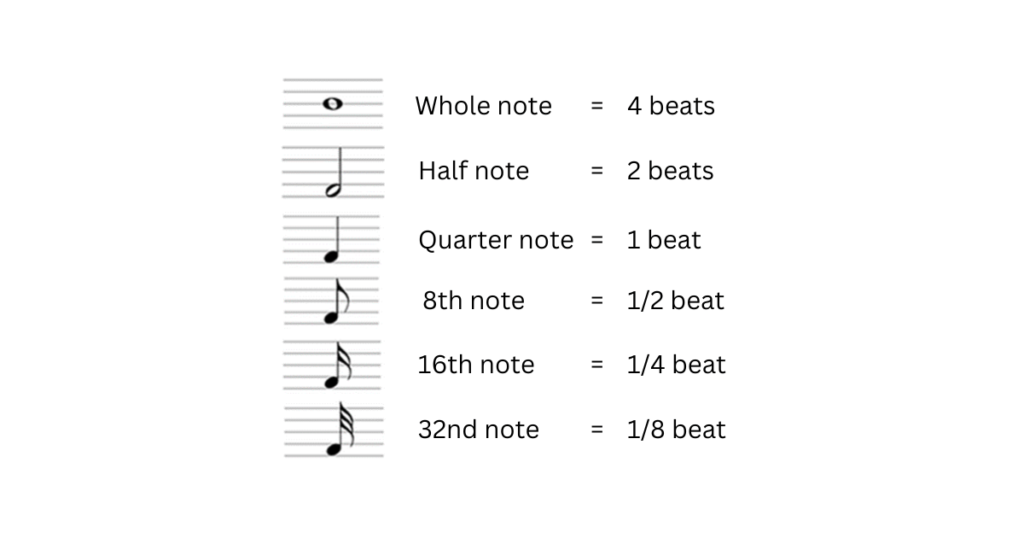
Each note is assigned its own duration in time. Common lengths for notes include whole notes, half notes, quarter notes and eighth notes – whole notes last four beats while half notes last two; quarter notes last one beat while eighth notes span half a beat duration.
Digital Flute Sheet Music VS Printed Sheet Music
Two main forms of sheet music may be employed when playing the flute: digital and printed. Digital sheet music typically displays digitally on computer programs or software while physical copies may be printed out onto paper material or another type. Both have advantages and disadvantages when finding what best meets your needs when picking out sheet music for flute playing.
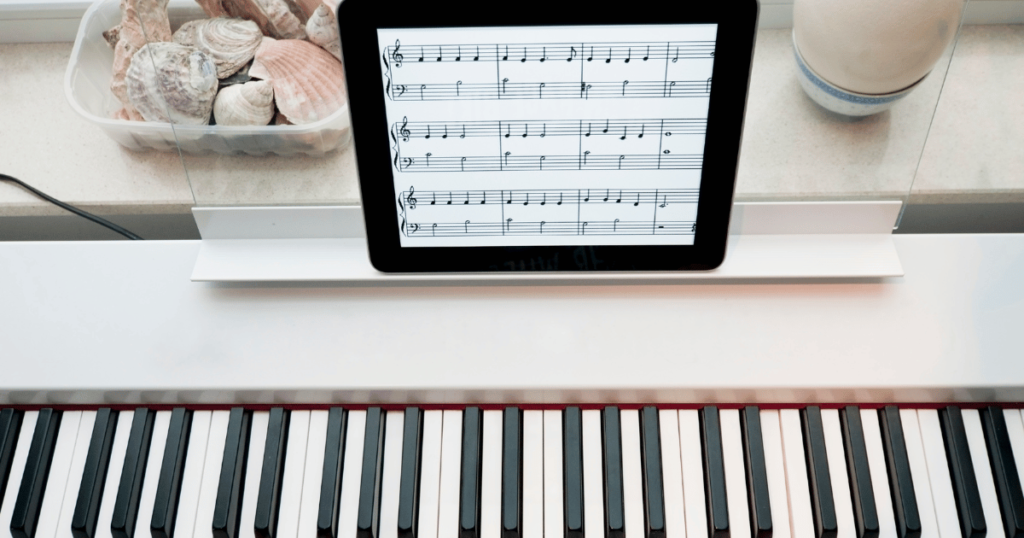
One key advantage of digital sheet music is its convenience and accessibility, offering global access and making organization simpler than physical pieces. Digital files do not take up any physical space on computers or other devices and may even offer transposition and annotation tools which help customize files more effectively than physical sheet music does. Additionally, some websites even provide transposition and annotation tools, making using digital sheets even simpler!
However, printed sheet music also has its advantages. Some individuals find the tactile experience of handling physical copies more satisfying than clicking through a computer screen; printing allows you to decorate or annotate pages more easily so as to remember and practice passages more quickly; additionally some find concentration easier with physical scores rather than digital scores.
Importance Of Breath and Fingers
Even if you already know how to read sheet music for piano, learning flute sheet music will require additional knowledge as flutists use specific symbols and articulations unique to their instrument that piano players do not normally utilize. Similarly, violinists (or cello players) must become adept at reading the up-bow and down-bow symbols on their instruments.
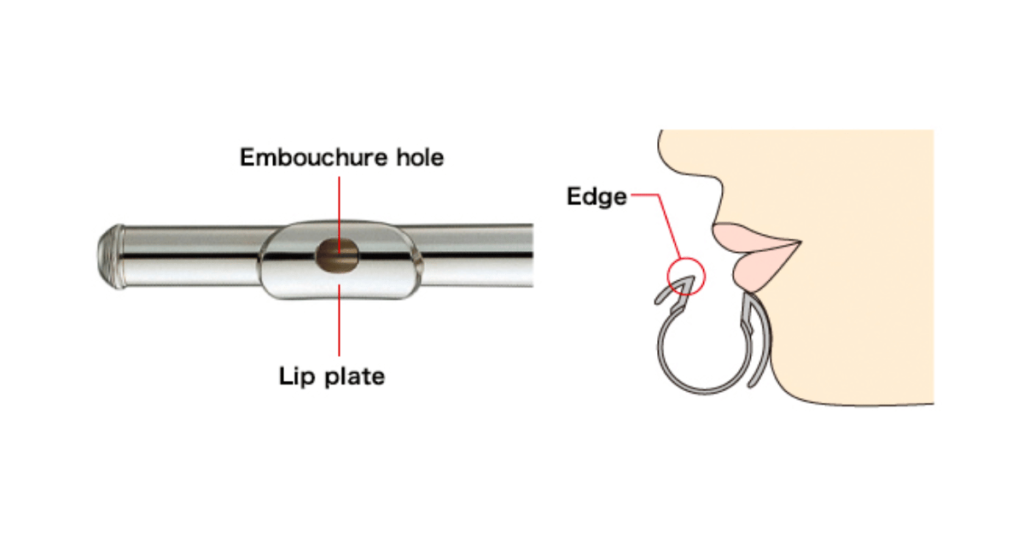
Flute players use various parts of their bodies to produce tones, pitches and beautiful phrases with musical expression. Tongue and breath must work in concert in order to maintain note duration; fingers control pitch while the separation between breath and tongue determines rhythm and counting patterns; breath dynamics add an additional musical flourish that adds expression into phrases.
Flute players need to use their breath correctly in order to maximize the performance of their instrument. Controlling how much air they blow directly affects pitch, dynamics and tone quality while proper breathing technique ensures consistent sounds from note-to-note throughout an entire phrase or piece.
Finger placement is also key to successful flute playing. Flutists must use their fingertips correctly to produce pitches and tones accurately. Furthermore, where their hands rest can affect how easily notes come out and determine what types of embellishments and articulations techniques can be employed.
Flutists looking to establish themselves on their instruments must focus on mastering both breathing and finger techniques – this will ensure the highest-quality sound from their instrument as well as having enough versatility in terms of styles and techniques to explore – in order to build up their foundation on it properly and ultimately express themselves musically through it. With practice comes confidence as flutists will find new ways of playing confidently!

Conclusion
With this post, you now have all of the tools at your fingertips for quickly finding free sheet music of Disney tunes, classic Christmas carols and beginner flute solos – as well as flute parts and a fingering chart to aid your practice session! Additionally, theory information helps ground your playing while familiarizing you with its mechanics – so start playing today and unleash your musical talents! Happy practicing!

